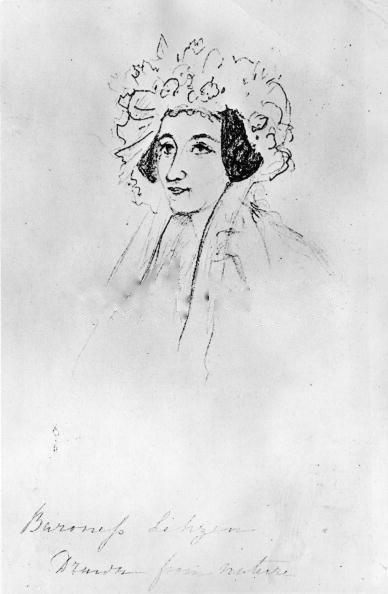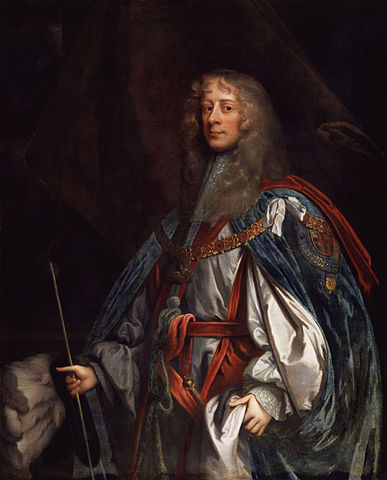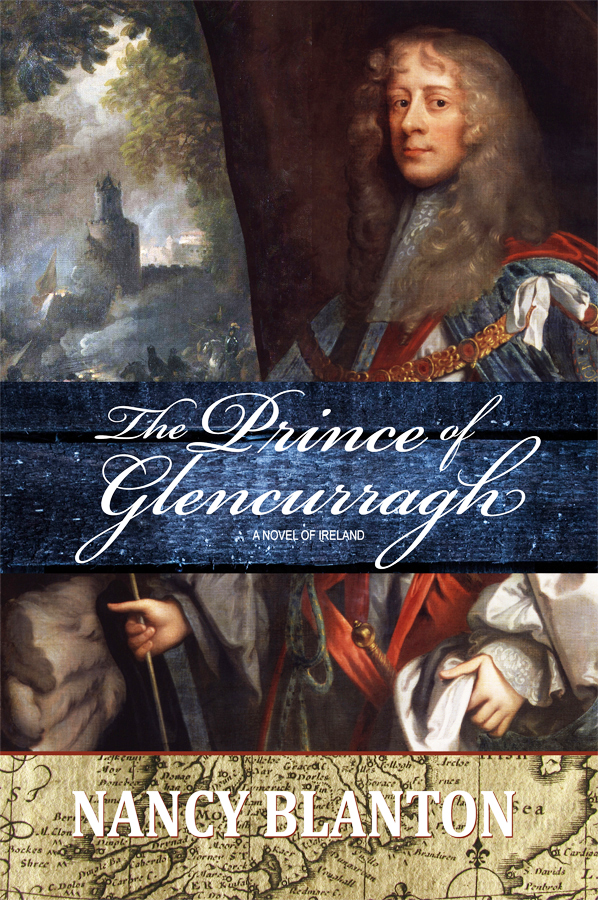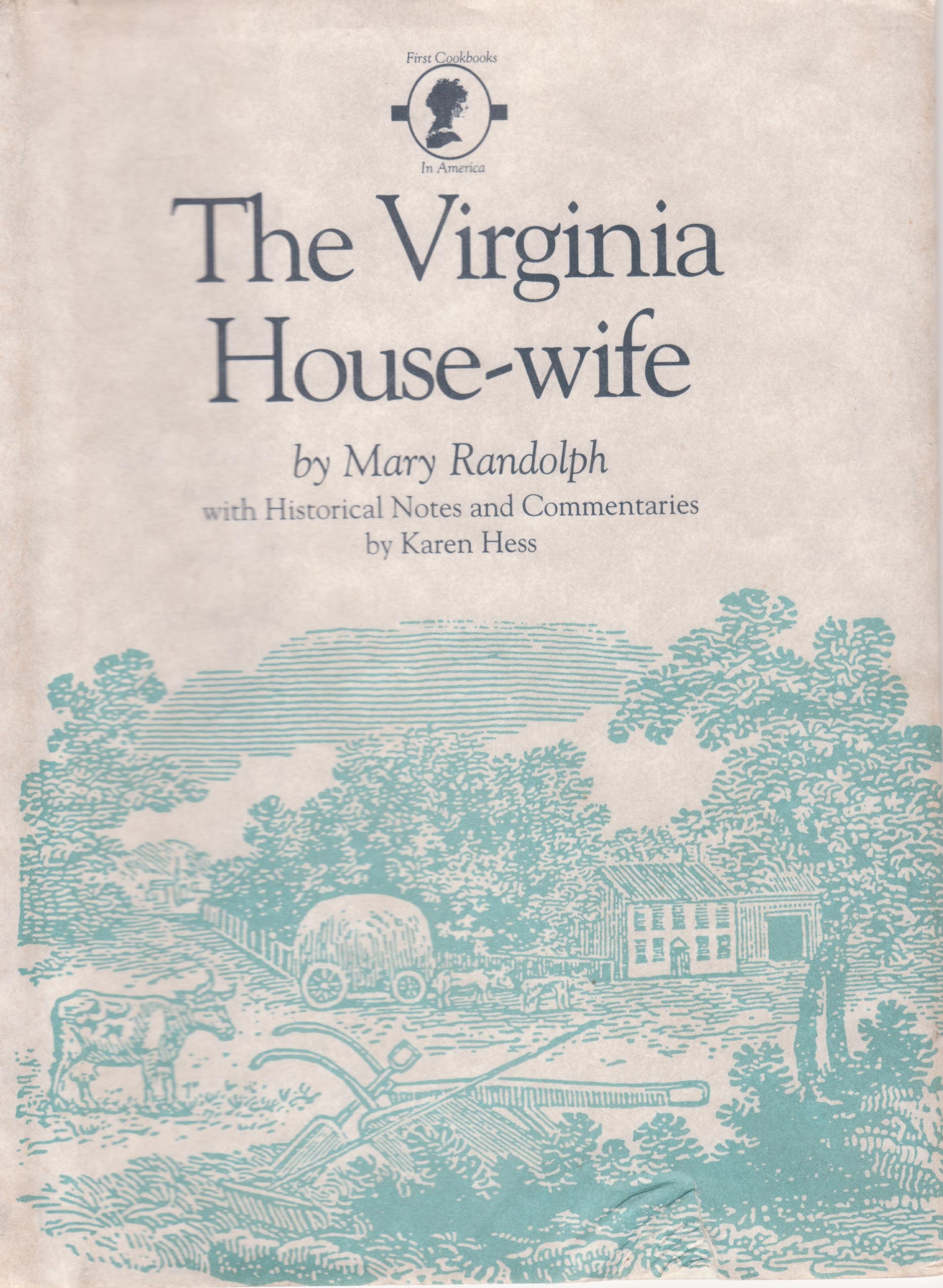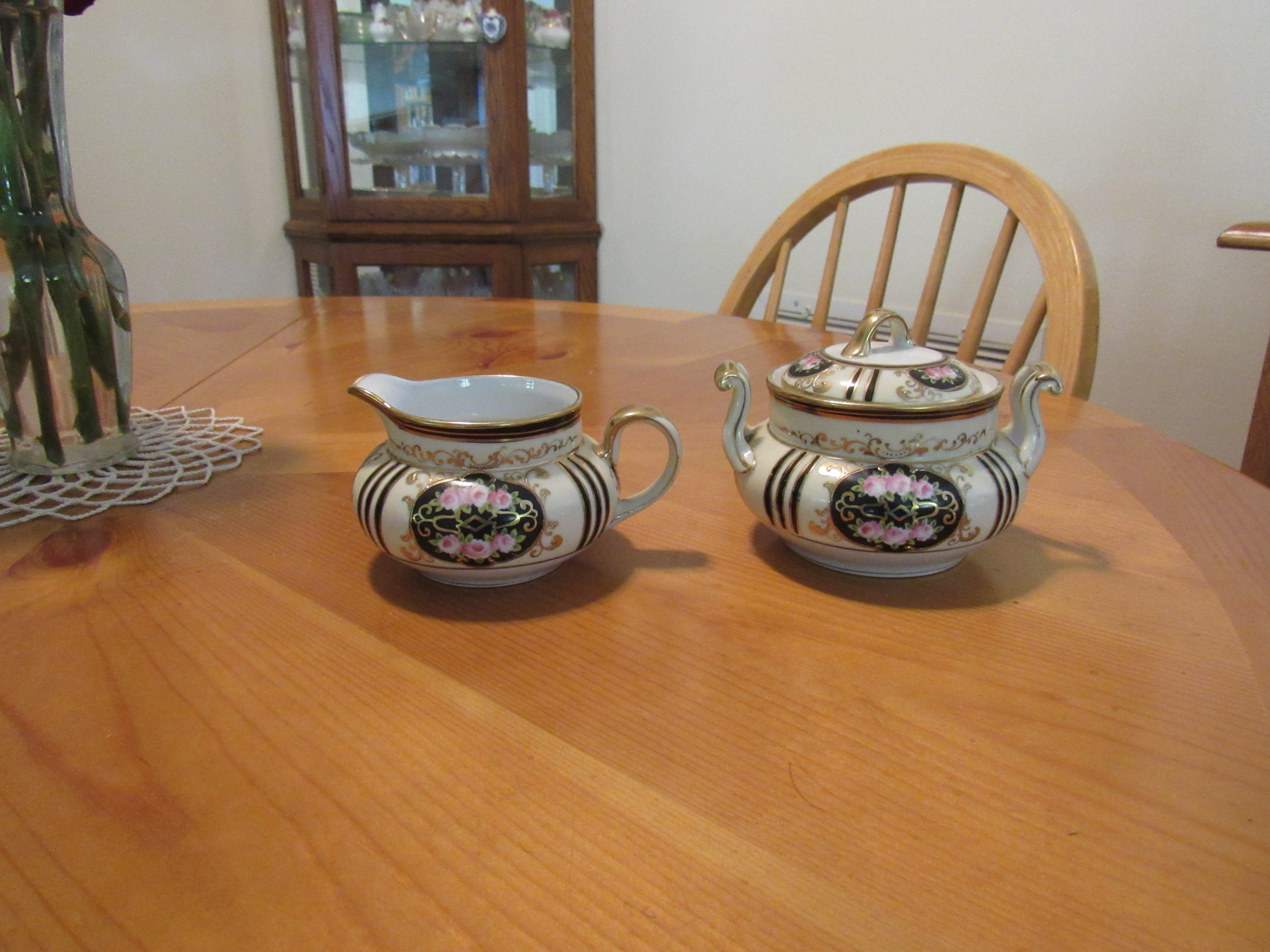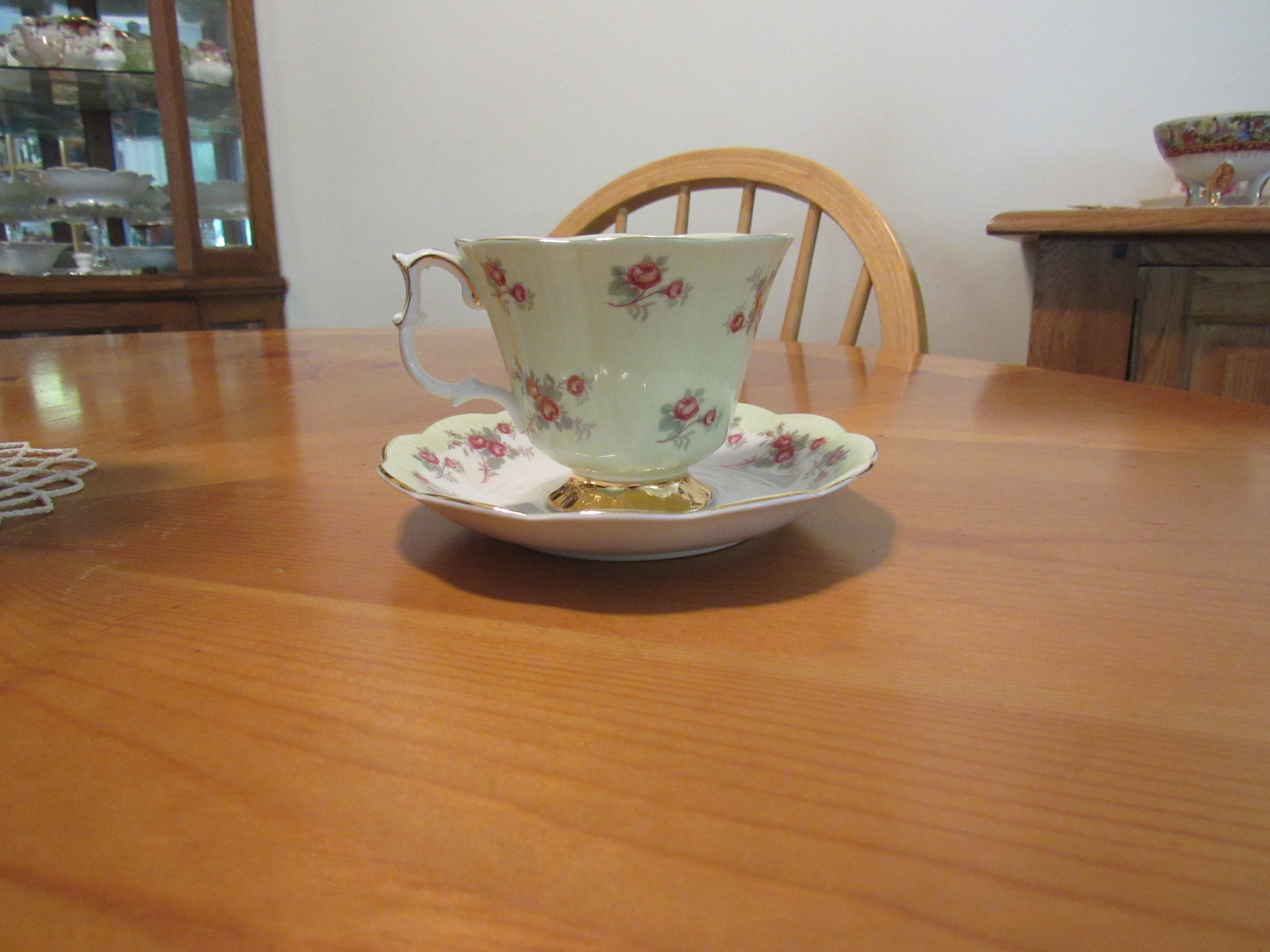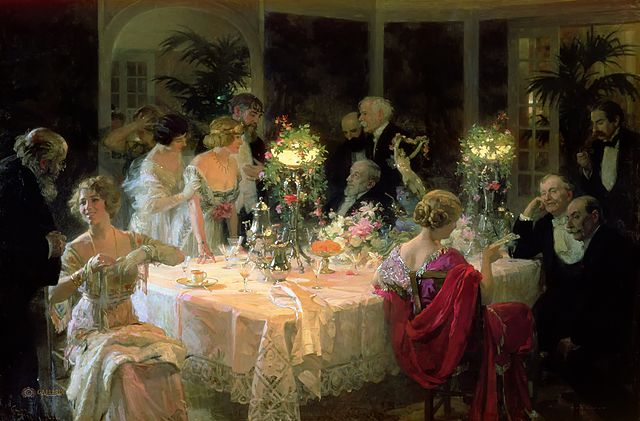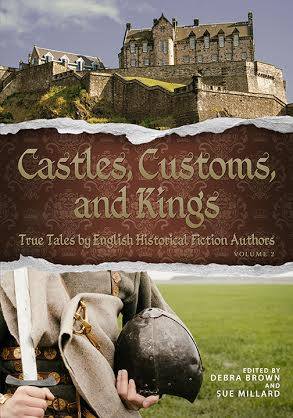We have a guest with us today. Please enjoy this excellent post by Maria Grace. Maria Grace is currently engaged in a blog tour promoting her new book, THE TROUBLE TO CHECK HER, a Pride and Prejudice re imaging focused on Lydia Bennet. I have read it and enjoyed it very much.
The Dance of Courtship
To be fond of dancing was a certain step towards falling in love – Pride and Prejudice, 1813
Jane Austen’s society was governed by strict rules regulating the interaction of the sexes. Young women were always chaperoned in the company of men, leaving the dance floor one of the only places that young people could interact a little more freely. Under cover of the music and in the guise of the dance, young people could talk, flirt and even touch in ways not permitted elsewhere, making it an ideal place to meet potential spouses and carry on a courtship.
Dance Partners
Every dance required a partner. During a public assembly, the Master of Ceremonies assisted couples by making introductions and suggesting partners to those who wished them. At a private ball, everyone was considered introduced, so any young man could ask any young woman to dance. A young lady signaled she was interested in dancing by pinning up the train of her gown. If asked to dance at a private event, she could not refuse unless she did not intend to dance for the rest of the night.
Gentlemen were expected to engage a variety of partners throughout the evening. Failing to do so was an affront to all the guests. The way a gentleman asked for a dance could begin a subtle and powerful conversation with a woman which would not otherwise pass by the watchful eyes of chaperones.
The offer might be made with eye contact and a quick gesture toward the dance floor; a smile, a bow and flowery words; a sweaty palmed, stammered request; or even a shrug and an eye roll of ‘well, I suppose you will do.’ A gentleman might request a dance in advance—a definite compliment to the lady. On the other hand, saving more than two dances for a particular partner was detrimental to a young lady’s reputation. Even two dances signaled to observers that the gentleman in question had a particular interest in her.
Dancing
Balls might begin with a mixer dance in which dancers switch partners frequently, enabling dancers to ‘sample’ every partner on the floor. These provided an excellent opportunity to scope out partners for future sets, particularly if one was looking for someone of a particular skill level or personality to pair with.
How much can one learn in a fifteen- to thirty-second set of steps with a partner whose name you do not even know? Quite a bit actually. One might meet ‘Henry who lists to the left’ who leans to the left, does not hear the caller well, and easily confused. ‘Bob the leprechaun’ might be all smiles, but unable to count rhythm to save his life or his partners. ‘Dashing Dandy’ might be all too aware of the dashing figure he cuts to care much for his partner. ‘The Colonel’ could take himself and the dance very seriously and disapprove of missteps deeply.
Ladies too demonstrated their disposition on the dancefloor. The Bingley sisters, in very fancy gowns indeed, could be inclined to looked down their noses at less experienced dancers and effectively put them in their places. In contrast, Lady Congeniality might make it her place to make everyone feel welcome. Whomever might be there, the ball room floor was lively and full of characters.
The dances for the evening were all built from an array of standard steps. Most of them were simple maneuvers like: partners turn by the right hand and two couples all join right hands and turn once around. Complex movements like figure eights, ‘hays’ and dancing down the set were included as well. In many of the line-based dances, couples would ‘take hands four from the top’, that is they would form groups of two couples who would dance together for one repetition of the music. In simple dances, both couples would perform the same steps throughout the dance. More complicated dances might have the first and second couples executing completely different steps with one more complex than the other, as in Mr. Beveridge’s Maggot (featured in recent movie adaptations of both Austen’s Pride and Prejudice and Emma.)
At the end of that repetition, the final steps ‘progress’ couples into new groups of four, first couples moving down the set to be first couple in the group one down from their previous position, and second couples moving up. In order for progression to work, couples at the top and bottom of the set would wait out a repetition of the music and not dance. This waiting out period offered a prime opportunity for couples to interact relatively privately on the dance floor.
In the span of a several minutes-long repetition, dancers might exchange pleasantries, flirtations, or even cross words. Whatever their conversation, though, they still had to pay attention to the music and other dancers so as not to miss their entry back into the set. At the next repetition they would rejoin the set, switching their role in the dance from first to second or second to first couple.
Not all dances offer these ‘time out’ periods. Circle dances and those done in sets of two or three couples required dancers to participate constantly, so little or no conversation might take place. Even so, a great deal of dance floor communication is possible without dialogue.
Speaking without Words
Eye contact could play a huge role in dance floor tête-à-têtes. From a practical standpoint, the eye contact made for a useful way to stave off dizziness from many rapid turns, but it has the potential for so much more. Eye contact might range from friendly and flirtatious to downright intrusive. Some partners engaging in constant eye contact, could hold their partners an intense, almost physical grip. Such exchanges could become demanding and intimate, isolating the couple in a room full of people.
Some partners might offer little in the way of eye contact, even to the point of avoiding any direct gaze with their partner. An avoidant partner could silently communicate a variety of things, from their own insecurity with the dance steps to distain for their partner.
Subtle physical contact on the dance floor, usually restricted to taking hands or joining arms at the elbow for a turn, also speaks volumes. Hands might be taken, barely touching and only as long as necessary, or held reverently, lingering as long as possible in the connection. In moves like passing ones partner in the middle of the line or circling back to back, how close or how far away ones partner remains communicates a strong message.
The way partners dance together creates a conversation of facial expression and body language as eloquent as the finest speeches. A more experienced dancer can subtly and patiently assist a less certain dancer through complex steps with glances and subtle gestures, encouraging and praising with eyes and smiles. Conversely, experienced dancers can declare disdain and even judgment on a struggling dancer even to the point of rough pushing or pulling that dancer into their correct position.
Partners who are equally anxious about getting the steps right, and good humored in their anxiety, could assist one another, laugh at missteps, and celebrate their victorious achievements progressing through a series of complicated steps. The experience could create a bond over the shared challenge. A gentleman might even kiss a lady’s hand after surviving such a trial—a most romantic gesture indeed.
When two proficient dancers partner, the flow of their coordinated movements could create a connection between them, linking them in purpose and action. The communication and energy flowing between them can be visceral and compelling, poignant as the deepest conversation.
Each dance itself possessed its own character, some being staid and elegant and others playful and flirtatious. Lord Byron’s Maggot—by the way, a maggot referred to a catchy tune, what we would today call an ‘ear worm’—suits its namesake. One set of steps involved a woman a man with a flirtatious ‘come hither’ beckon to follow her. The three couple dance, Hunt the Squiril (sic) requires the first couple to chase each other, weaving through the other dancers. These suggestive moves could be made as token gestures or with sincere energy.
It is easy to see how in the period, where conversation was restricted to ‘polite’ topics and interactions between unmarried individuals were strictly chaperoned, the dance floor offered the one place where open expression was considered acceptable. There, individuals could be dramatic, funny and flirtatious without censure from society at large—provided of course that they did not take their self-expression too far. Therein lays the power and allure of the dance floor for hero and heroine, for there alone might they express what they could not say directly.
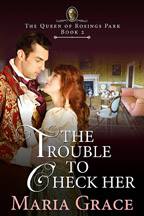
Take a peek at the book blurb for THE TROUBLE TO CHECK HER!
Lydia Bennet faces the music…
Running off with Mr. Wickham was a great joke—until everything turned arsey-varsey. That spoilsport Mr. Darcy caught them and packed Lydia off to a hideous boarding school for girls who had lost their virtue.
It would improve her character, he said.
Ridiculous, she said.
Mrs. Drummond, the school’s headmistress, has shocking expectations for the girls. They must share rooms, do chores, attend lessons, and engage in charitable work, no matter how well born they might be. She even forces them to wear mobcaps! Refusal could lead to finding themselves at the receiving end of Mrs. Drummond’s cane—if they were lucky. The unlucky ones could be dismissed and found a position … as a menial servant.
Everything and everyone at the school is uniformly horrid. Lydia hates them all, except possibly the music master, Mr. Amberson, who seems to have the oddest ideas about her. He might just understand her better than she understands herself.
Can she find a way to live up to his strange expectations, or will she spend the rest of her life as a scullery maid?
Buy Links:
Amazon: http://www.amazon.com/dp/B01CTLTE6I
BN NOOK: http://www.barnesandnoble.com/w/the-trouble-to-check-her-maria-grace/1123601415
KOBO: https://store.kobobooks.com/en-us/ebook/the-trouble-to-check-her
Meet the Author!
Though Maria Grace has been writing fiction since she was ten years old, those early efforts happily reside in a file drawer and are unlikely to see the light of day again, for which many are grateful. After penning five file-drawer novels in high school, she took a break from writing to pursue college and earn her doctorate in Educational Psychology. After 16 years of university teaching, she returned to her first love, fiction writing.
She has one husband, two graduate degrees and two black belts, three sons, four undergraduate majors, five nieces, six new novels in the works, attended seven period balls, sewn eight Regency era costumes, shared her life with nine cats through the years and published her tenth book last year.
She can be contacted at:
author.MariaGrace@gmail.com
Facebook:
http://facebook.com/AuthorMariaGrace
G+:
https://plus.google.com/u/0/103065128923801481737/posts
On Amazon.com:
http://amazon.com/author/mariagrace
Random Bits of Fascination (http://RandomBitsofFascination.com)
Austen Variations (http://AustenVariations.com)
English Historical Fiction Authors
(http://EnglshHistoryAuthors.blogspot.com)
On Twitter @WriteMariaGrace
On Pinterest: http://pinterest.com/mariagrace423/

